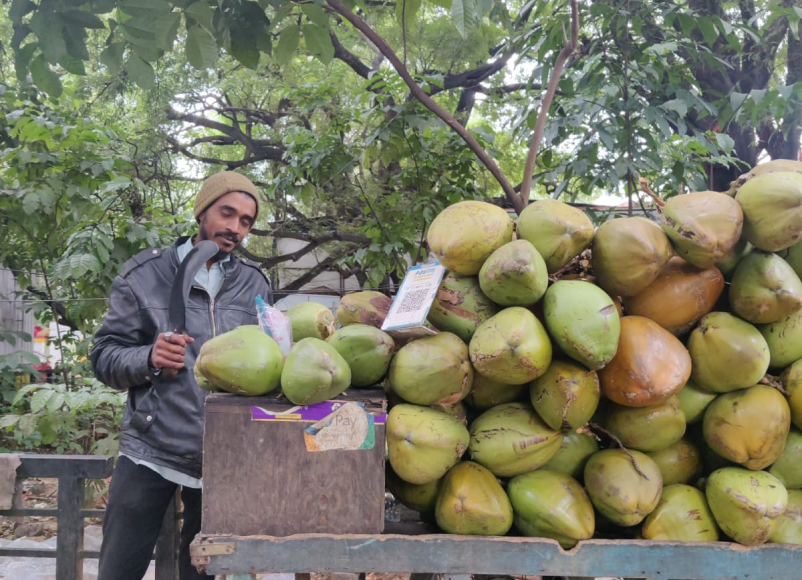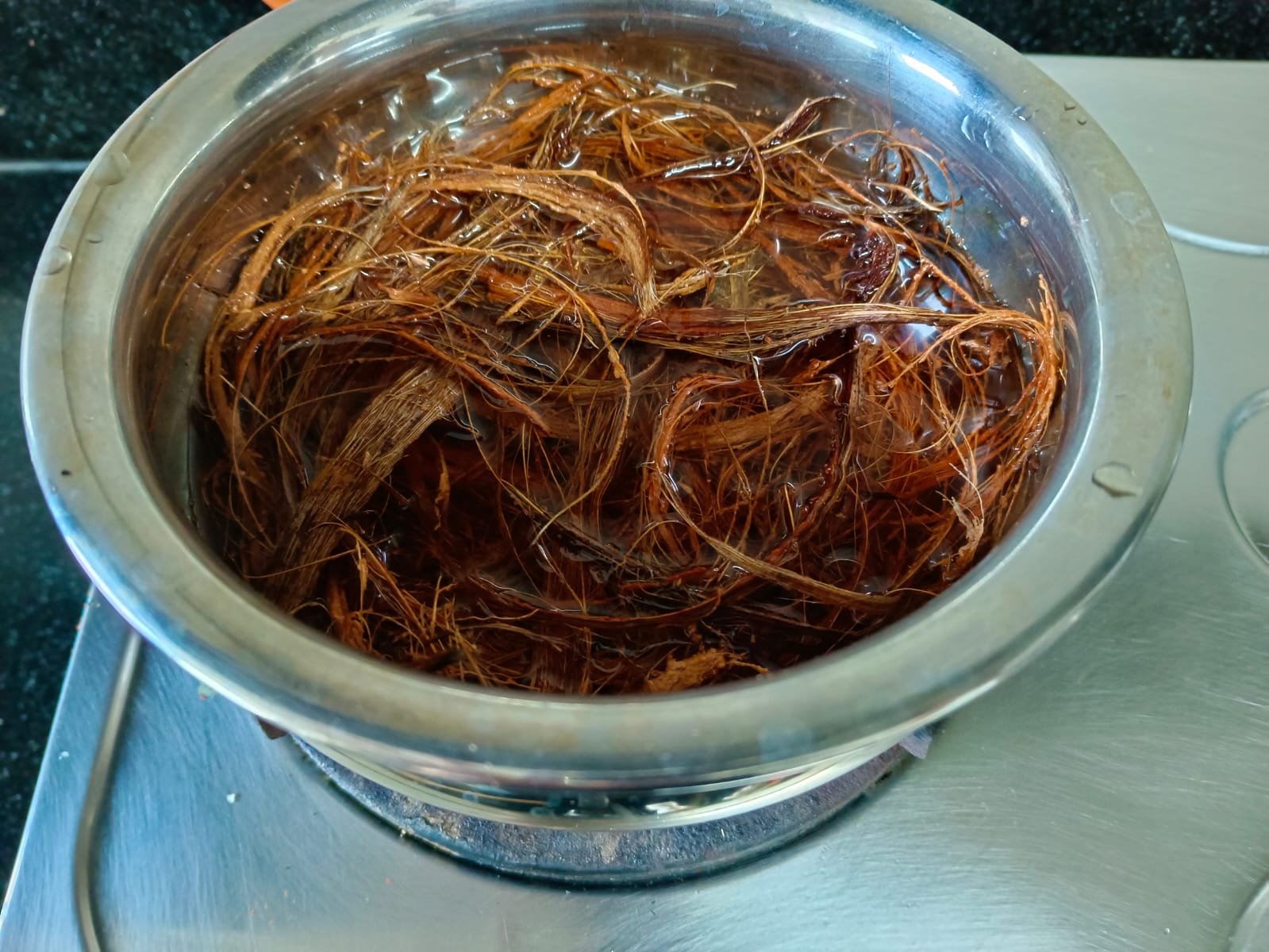
Featured at the Bangalore Design Conference 2022
I was fortunate enough to be granted the unique opportunity of being able to showcase my project at the Bangalore Design Conference 2022 at Lalit Ashok as part of one of the events of Bangalore design week organized by the World Design Organization, to promote sustainable design and material explorations.
In A Nutshell: Trash to cash
August - December 2022
The goal of this project was to build a circular economy around the large amounts of tender coconut waste generated in commercial Street by creating a system and product intervention that will benefit the vendors while also raising awareness about the uses of tender coconut waste as a readily available sustainable material in the public eye. As of now the entirety of the tender coconut waste generated ends up in landfills despite the potential of it as a material, this project aims to bring tender coconut products into mainstream usage as a viable alternative to plastic packaging, utensils and covers. The overarching theme is to create a positive impact at commercial street. By finding ways to reduce waste generation and improper disposal, this project hopes to help create a cleaner and more sustainable commercial street.



In order to understand the pain points and the areas of intervention, I needed to first understand the lifestyle of the vendors and the value chain to find out how I could intervene without disrupting the current system. I also needed to map out the patterns and analyse the overlaps in each vendors experience. After speaking to the vendors I spoke to the waste collectors, the suppliers, companies currently dealing in tender coconut waste products as well as people from The Coir Board of India.
INSIGHTS
500 to 600 tonnes of waste is generated daily ( in one landfill) of which 300 tonnes is tender coconut waste
In the off season 150 tonnes of waste is generated
Its tough to collect waste from the tender coconut sellers themselves because the waste collectors get paid based on the weight that they manage to collect so they refuse to share their material but the material collected is hardly utilised
No equalized rates. due to lack of business people sell at whichever rate suits them
No exports are taking place ( cost of shipping is more than the cost of the product itself) so people are destroying the market by fluctuating the rates to get individual profits.
The lack of storage of the product before selling as well as the waste before it is processed causes excess waste and creates large landfills
MATERIAL SCOPE
Good acoustics
Currently being tested and used as a geotextile
Tender coconut went burnt have one of the best forms of carbon which is extremely useful in grey water treatment
There has been research done on the absorption properties of coconuts in terms of dye removal and heavy metals and phenols from textile effluent in different papers.
Material Analysis
Tender coconuts tend to have white fiber on the inside that is softer and contains higher water content suitable for creating yarn or fishing lines. They also have a thin coating of ‘malai’ which is the endosperm. Mature coconuts on the other hand, have brown coarse hair on the endocarp which is, referred to as coir. Coir is used extensively in furniture, mattress, doormat, bag etc. production. Once the coir shell is cracked you may find some water and thick ‘copra’ which is the solidified meat.
MATERIAL PROBLEMS
Difficult to find a sustainable binder
Lignin is inconsistent as a binder
Cost of resin for building furniture is too high
Similar to ply but higher cost which reduces demand
high moisture content can lead to fungus
Not enough material research and marketing has been done due to which industries refuse to adopt it as an alternative
Potential Products
Material Prepping

Drying The coconut

Boiling the Fibre

Peeling the layers
Material Exploration
PROCESS






FINAL PRODUCTS

Coconut fibre hangers and coconut dyed fabric

coconut fibe packaging small products

coconut fibre packaging boxes

coconut fibre trays

coconut fibre trays

Tender coconut dyes and inks

tender coconut container and incense sticks

Tender coconut incense stick

tender coconut trays

Tender coconut egg packaging

tender coconut box and ink


Tender Coconut Ink prints

Prints made with tender coconut ink










